You can’t find a more simplified form of hydroponic growing than a system that uses passive hydroponics principles. Passive hydroponics provides water only beneath the plant roots and doesn’t recirculate. The nutrient-rich water remains in the system until it’s used by the plants.
There are two types of passive hydroponics: soilless and soil. Not dirt, like the kind on the ground, but soilless potting mix, which in the hydroponic world is known as ‘soil’.
In true soilless passive hydroponics, all the plant’s nutrients are available only through the water in the reservoir. Yet, when using a potting mix, both the media and the reservoir can hold nutrients or supplements. The method you choose to use guides your choice of growing media.
There are several styles referred to as passive hydroponics. If it is hydroponic, either the plant is suspended over the nutrient solution and relies on its roots to access it, or a wick draws the nutrient-rich water up to the media for roots.
The Kratky Method suspends plants into the nutrient tank. The second method, known as wicking, works just like capillary action in the natural world of plants but allows an oxygen zone between growth media and nutrient solution.
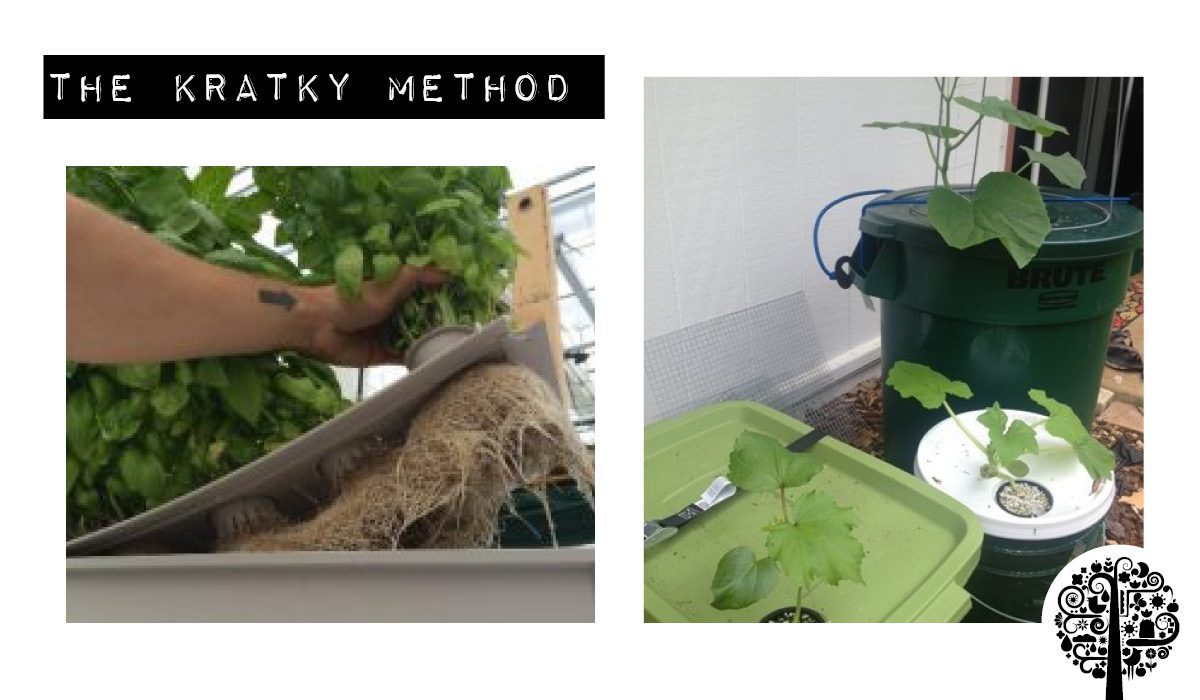
You can’t use coir or peat in a Kratky setup, but you can in a wicking system. Why? The smaller particles will fall through the holes in a net cup designed to contain aggregates like clay pellets or pea gravel. You can wick into gravel and vermiculite using cotton or wool fabric, natural rope, and even oil lamp wicks.
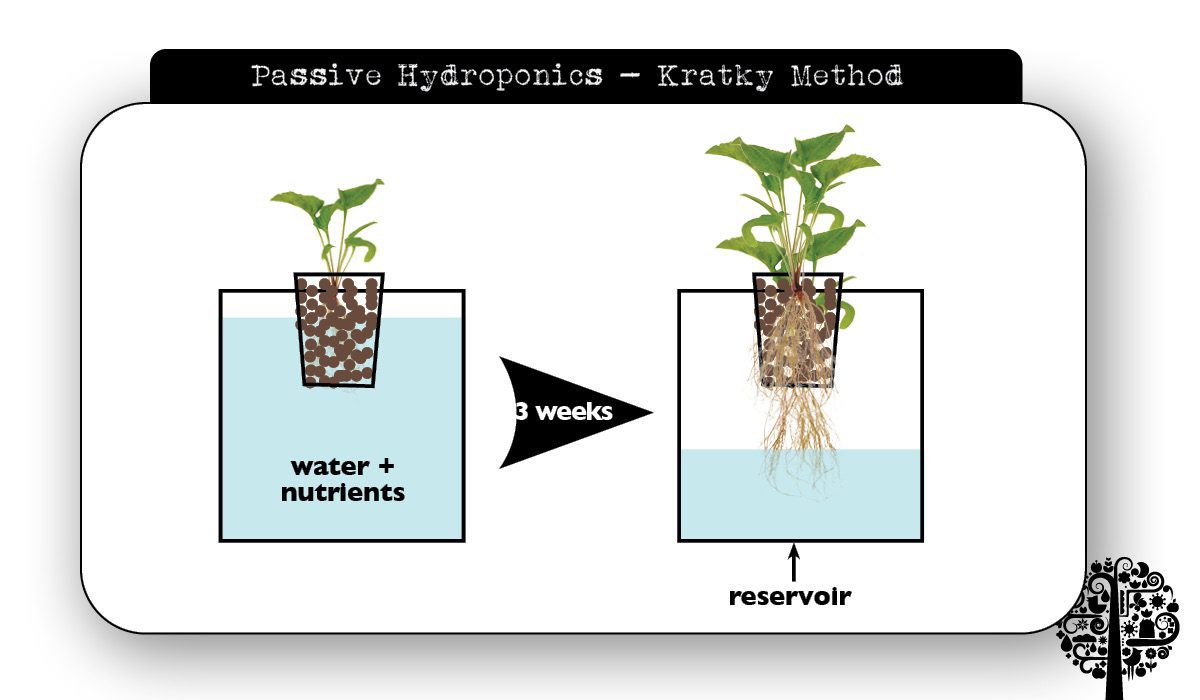
The Kratky method forces plants to seek out water and nutrients. Young seedlings in this passive hydroponics setup have immediate access at the bottom of the suspended net cup, but as the root system grows larger and consumes the reservoir supply, the water level drops and the roots chase it down. Passive hydroponics that uses a wick, however, brings the water to the plant. You can apply both types of passive hydroponics to single and multiple plant systems. You’ll find people growing this way in Coke bottles, canning jars, 5-gallon buckets, coolers, tubs, barrels, and wooden raft boxes lined with plastic.
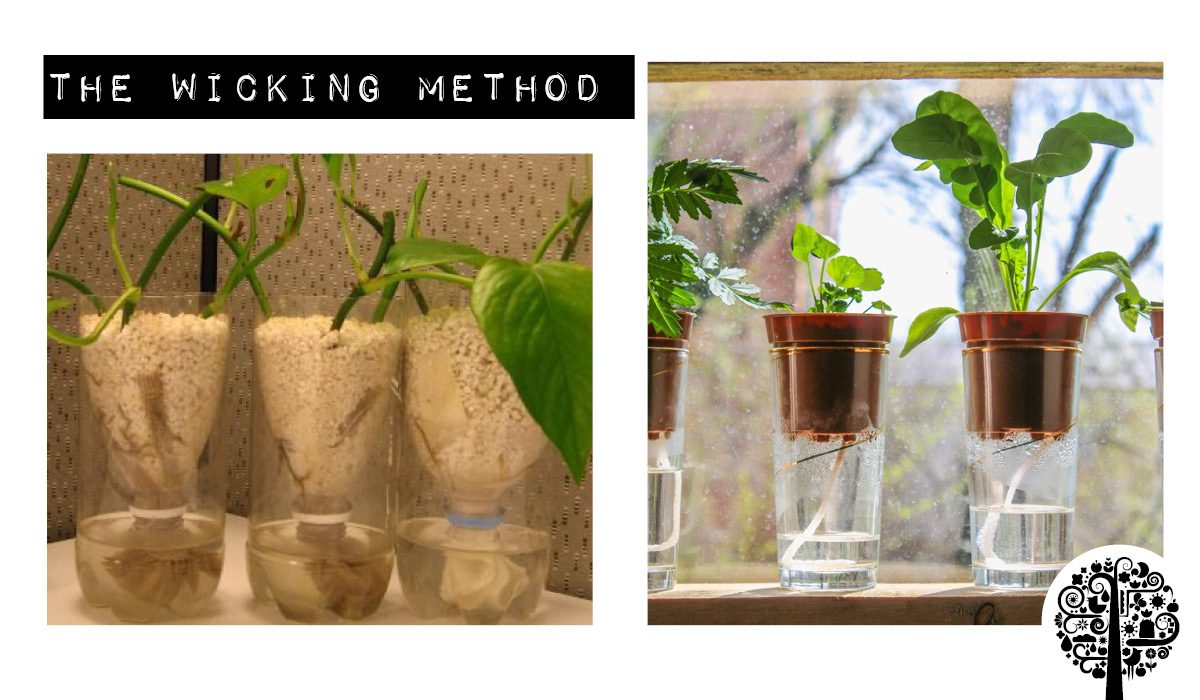
Choose reservoir containers to fit the plant and its roots. For instance, slicing tomatoes won’t perform well in a big coffee can. A 5-gallon bucket works, but a 20-30 gallon barrel is better.
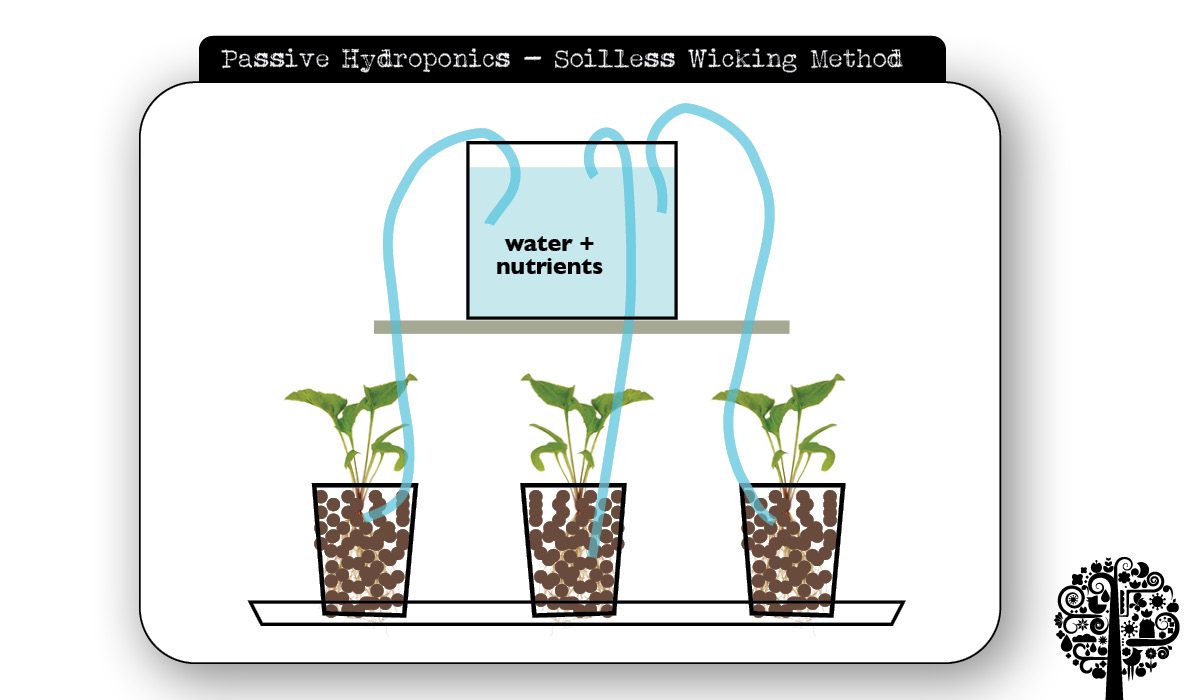
You can grow most fruiting and leafy crops indoors or outside using passive hydroponics without any electricity at all – as long as you’ve got plenty of direct sunshine.
However, some cultivars may not perform well in a Kratky setup, like my lettuce trial a few years ago. I grew two green and two red Salanova lettuces in coffee cans, and while the Green Butter plants stretched their roots and followed the water, the Red Sweet Crisp did not!
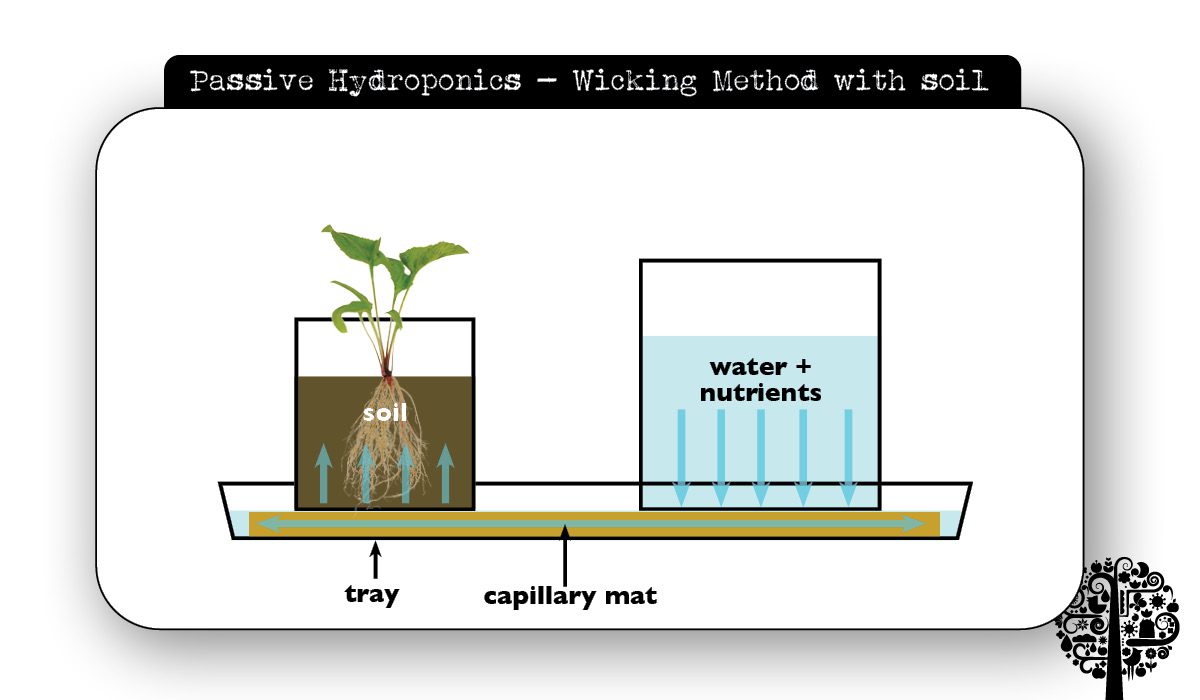
The red type I chose just wasn’t a good Kratky method selection. It grows perfectly well in soil or pots, and in hindsight, I realized that transplanting into a wicking setup would quickly correct the issue.
Whatever you choose to create a homemade passive hydroponics setup in, make sure the walls aren’t transparent. You don’t need light inside your reservoir. Besides roots avoiding light, algae will move in and use up all oxygen your plants are relying on.
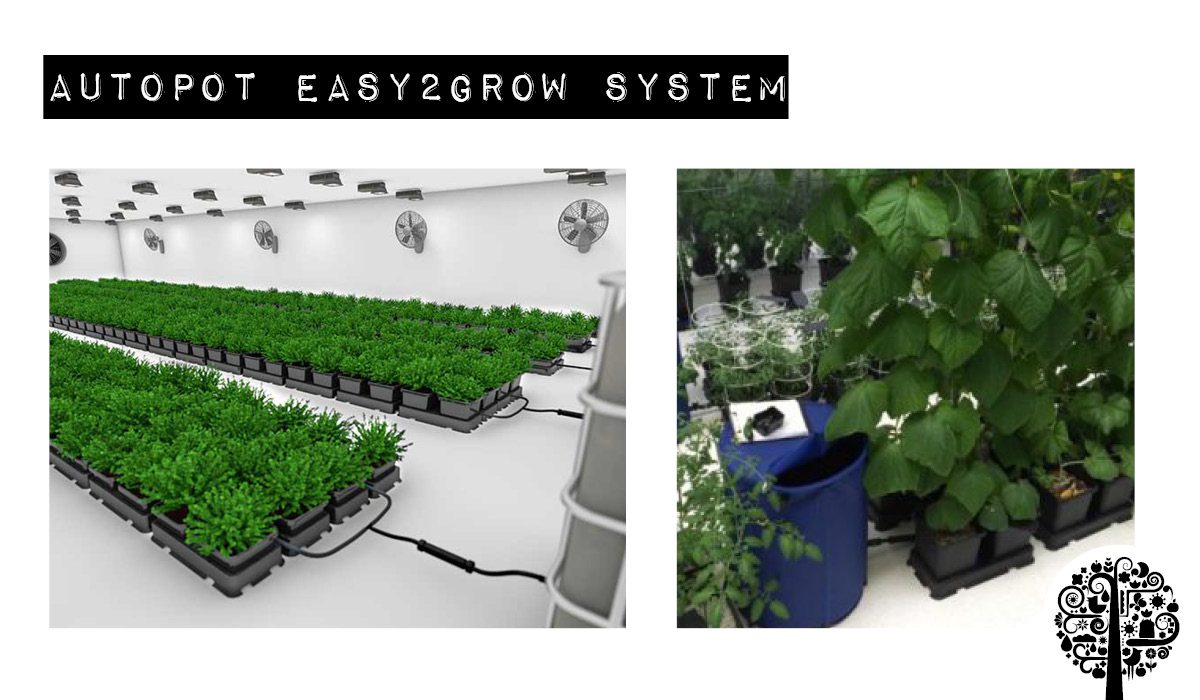
My favorite is more sophisticated than a precisely molded tub, and it’s scalable, so you can start small with two to four plants and add units as your garden grows. That’s the AutoPot Easy2Grow system, which gives the gardener some distinct advantages over both the Kratky and wicking methods:
- You can use it as a hydroponic system with plain coir or peat growth media, or a self-watering garden when planting in a nutrient-rich potting mix.
- All your individual pots are separate from the reservoir.
- Moisture and nutrients arrive in the growing media through gravity and a unique mechanism in the tray beneath each pot.
- The mechanism only allows more moisture to enter when the media is dry. This prevents possible root disease problems from an overly soggy potting mix and allows you to keep the reservoir in a cooler place than your plants. Reservoir temperature is important, especially when growing outdoors in summer’s heat. You can’t cool off a heat-stressed plant with hot water!
Last updated by Catherine Sherriffs on 20/07/2020.
Just FYI, no self-respecting gardener grows in “dirt”. LOL. We also grow in soil and preferrably a vibrant living FOOD SOIL WEB. “Dirt farmers” are a thing of the long-ago past. Just sayin’. 🙂
Wonderful sugestions and illustrations. I enjoy its reading and will put it into practice soonest !
grreat content!! what is good wicking material? can you use like a piece of dish towel or t-shirt or something specific? thanks
Hare Hare Krishna Prabhu Ji
Don’t make confusing stuff up.. no one calls anything that isn’t soil; soil. They might call it soilless or media but never “soil”: that’s silly.
Ditto. And no self-respecting gardener grows in DIRT. We GROW IN SOIL.